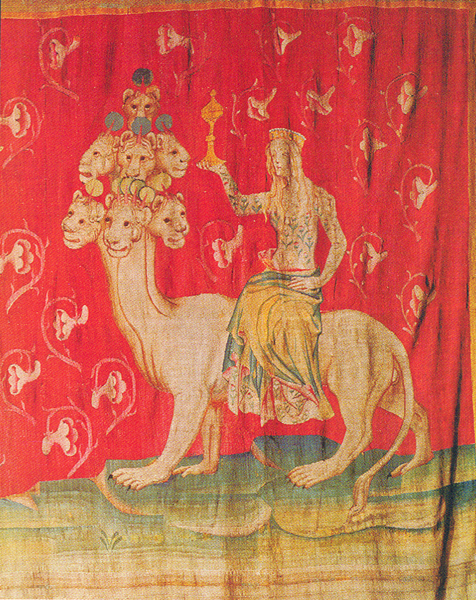Image Details

Erich Lessing
“Babylon the Great, mother of harlots,” rides on the back of the beast with seven heads and ten horns in a detail of the late-14th-century Tapestry of Angers, by Jean de Bondol and Nicolas Bataille. The whore, with a gold crown encrusted with gems, and pearls, holds up a chalice “full of abominations and the impurities of her fornication” (Revelation 17:4). The beast has the feet of a bear, the body of a leopard, and the mouth of a lion.
Revelation details the destruction of Babylon and the secular world, represented by the beast and the harlot. At the time Revelation was written, these two figures were also understood to represent Rome. For Koresh (his assumed name is Hebrew for “Cyrus,” the ancient Persian king who defeated Babylon), they symbolized the corrupt religious and political system of the modern Western world. Members of the compound referred to FBI agents and other outsiders as “Babylonians.”
